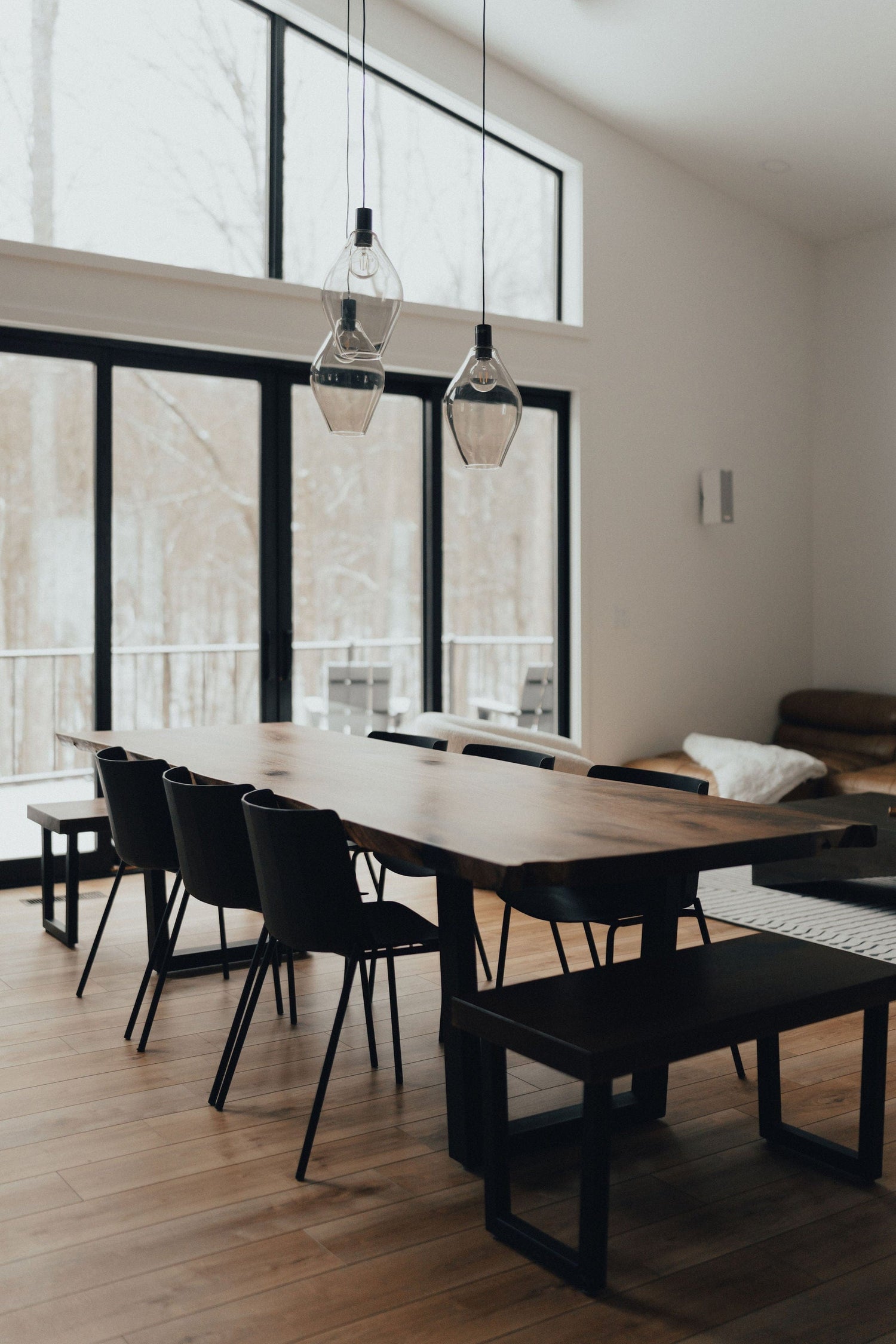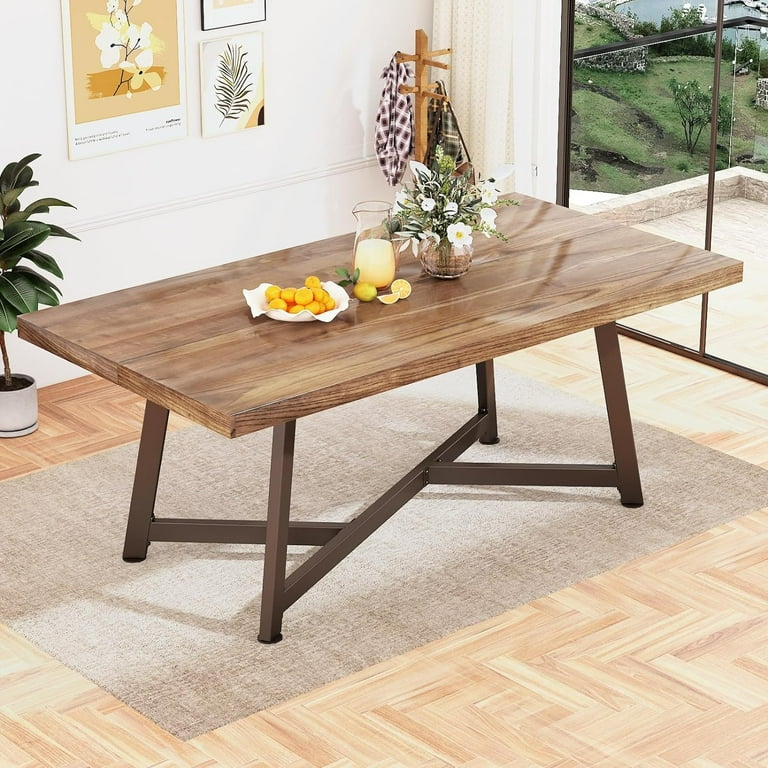How to Select the Perfect Dining-room Table Legs for Your Home Decoration
Choosing the excellent dining-room table legs is a nuanced process that needs mindful factor to consider of various elements, including your area restrictions, visual choices, and sensible demands. The interplay between styles, measurements, and products can dramatically influence the setting of your dining location, making it essential to approach this decision methodically. As you contemplate the myriad options available, it becomes clear that the best choice extends beyond mere look; it can boost your total eating experience. What aspects should you prioritize to ensure your selection complements your home's unique personality?
Assess Your Eating Area
Evaluating your eating area is essential for picking the right table legs that enhance both looks and performance. Begin by measuring the measurements of your dining location, including ceiling elevation, floor area, and proximity to various other furniture. This info will assist determine the ideal size and elevation of your dining table, which straight influences the option of table legs.
Following, consider the style and format of your eating room. As an example, an open-concept design might take advantage of table legs that provide aesthetic lightness, such as slim steel or acrylic choices. Alternatively, a more traditional setting may ask for sturdy wooden legs that offer a feeling of durability.
Review the existing shade combination and materials in your dining area. Harmonizing the table legs with these elements creates a natural appearance that improves the general design.
Ultimately, a complete analysis of your dining space will guide you in making an educated choice, making sure that your table legs not only enhance the aesthetic allure however also offer sensible functions.
Consider Your Style Preferences
When choosing dining-room table legs, it is necessary to reflect on your individual design preferences, as they significantly affect the general aesthetic of your eating area. Your choice of table legs can either enhance or comparison with existing décor, making it essential to straighten them with your favored interior decoration style.
If your home leans towards a contemporary aesthetic, consider streamlined metal or minimal wooden legs that give a tidy, uncluttered appearance. For a more typical technique, ornate wood legs with elaborate makings can add a touch of style and elegance. Industrial designs benefit from durable, resources such as redeemed wood and metal mixes, showing a sturdy charm.
In addition, farmhouse and rustic styles commonly favor strong, beefy legs that evoke a feeling of heat and comfort. Alternatively, if your decoration is diverse, you could choose unique shapes or a mix of materials to produce aesthetic interest.

Evaluate Material Options
The selection of product for dining room table legs plays a critical function in both longevity and aesthetic appeal. Common materials include wood, metal, and composite choices, each offering unique attributes that can affect the total appearance and long life of your table.
Timber is a timeless selection, recognized for its heat and convenience. Woods like oak and walnut give exceptional strength and can be finished in various stains to match any decor. However, softwoods like pine are extra vulnerable to damages and scrapes, making them less ideal for high-traffic areas.
Steel legs, frequently crafted from steel or light weight aluminum, emanate modernity and commercial appeal. They are immune and extremely resilient to wear, making them ideal for households with kids or frequent celebrations (dining room table legs). Furthermore, metal can be ended up in different colors, boosting the personalization possibilities
Composite products, such as MDF or laminate, deal affordability and varied styles. While generally much less long lasting than solid timber or metal, they can still give an elegant appearance and are usually simple to maintain.
Inevitably, the material you pick ought to straighten with your way of life, visual preferences, and the degree of use your eating table will experience.
Determine Elevation and Size
Choosing the appropriate elevation and size for your dining-room table is vital for both functionality and convenience. The standard height for eating tables usually varies from 28 to 30 inches, allowing adequate legroom for most people when seated. Nonetheless, it is important to take into consideration the dimensions of your dining room and the sorts of chairs you prepare to make use of.

In addition, take into consideration the percentages of your eating area. A bigger table in a sizable location can develop a grand setting, while a smaller sized table functions well in even more intimate setups. Inevitably, the appropriate height and size will balance he has a good point with your general design and enhance the eating experience for you and your guests.
Explore Personalization Opportunities

Furthermore, the design of the legs can be customized to fit numerous styles, such as rustic, modern-day, or commercial. For example, conical legs can evoke a mid-century modern-day feeling, while chunky, block-style legs might resonate with typical or farmhouse design.
Home owners can likewise explore color coatings, from natural timber spots to repaint, enabling them to match or comparison with the tabletop and bordering decor.
Additionally, leg height can be changed to accommodate certain seating arrangements or personal choices, enhancing both convenience and functionality.
Last but not least, unique decorations, such as makings or decorative braces, can further customize the table legs, making the eating experience not simply a statement however a dish piece in the home. By thinking about these modification options, property owners can develop an eating room table that genuinely mirrors their individuality.
Final Thought
Choosing the excellent dining-room table legs needs mindful factor to consider of various elements, consisting of the measurements of the eating room, style preferences, material toughness, and wanted elevation. Modification options even more improve the capability to accomplish a natural visual that see enhances the total style. By systematically evaluating these elements, property owners can guarantee that the selected table legs not only satisfy practical demands however likewise contribute positively to the dining experience and ambiance of the home.
Selecting the perfect dining room table legs is a nuanced process that requires careful consideration of various elements, including your room restrictions, aesthetic preferences, and functional needs.Analyzing your eating room is vital for choosing the right table legs that complement both looks and performance.When determining dimension, determine the area where the table will be put to guarantee it fits pleasantly, enabling for at the very least 36 inches of clearance around the table for simple motion. A larger table in a sizable location can produce a grand ambiance, while a smaller sized table functions well in more intimate setups.Choosing the optimal dining area table legs needs careful factor to consider of different factors, consisting of the dimensions of the eating area, style choices, material durability, and preferred height.